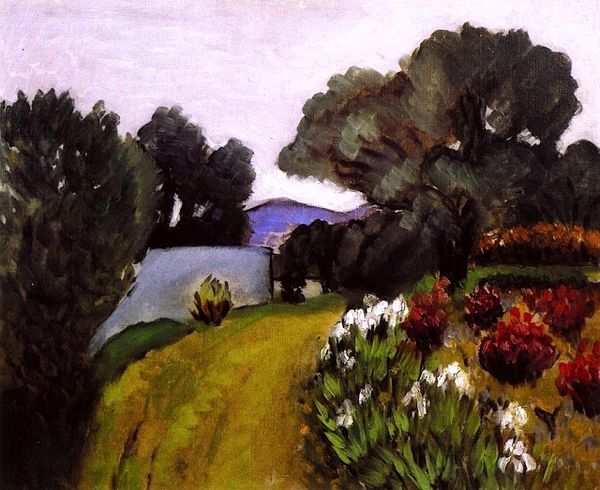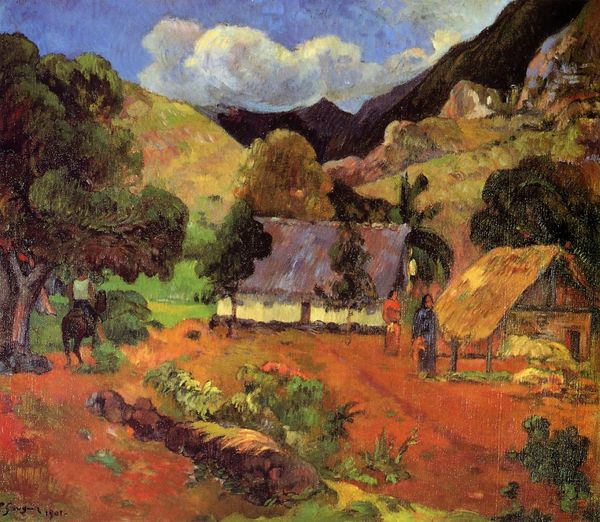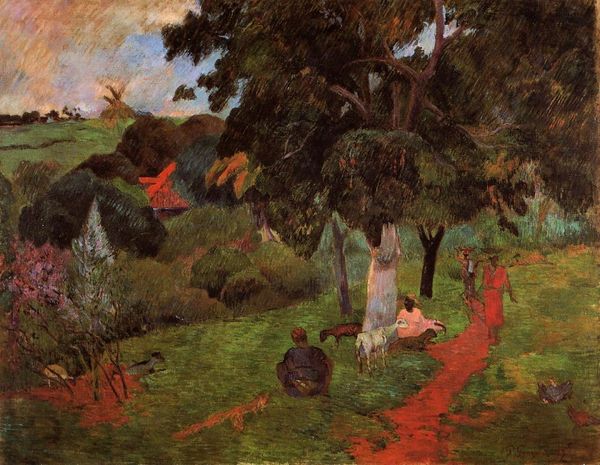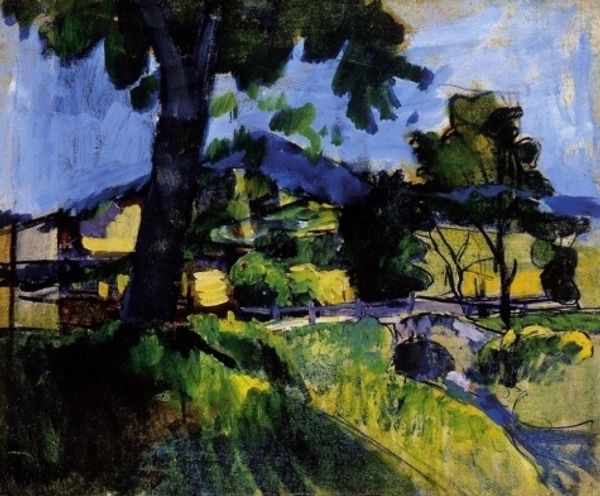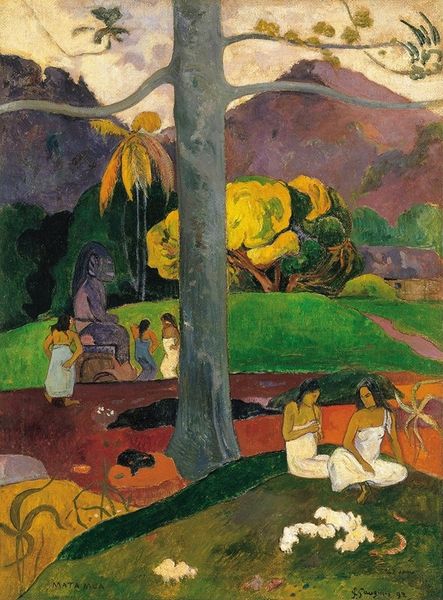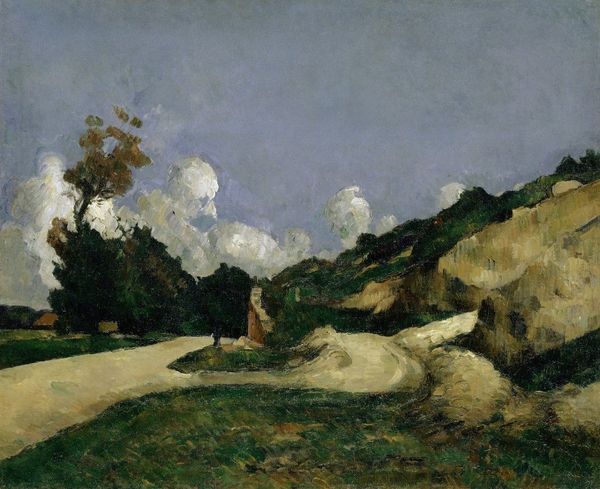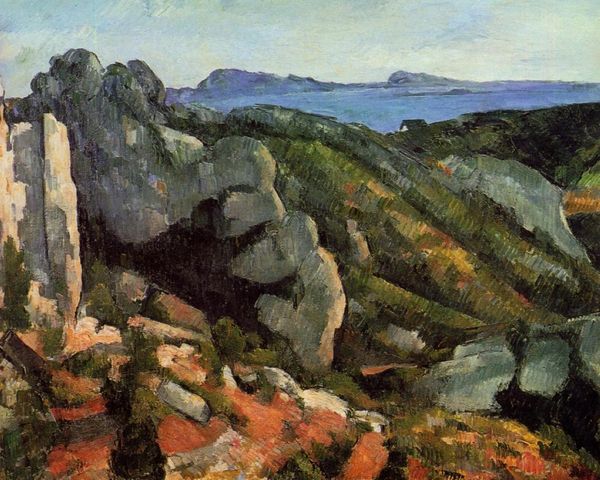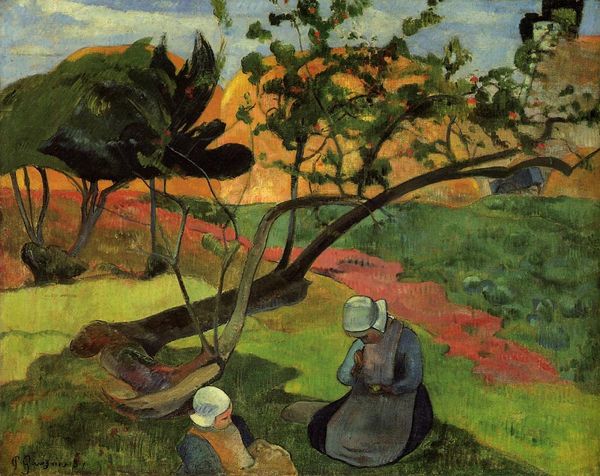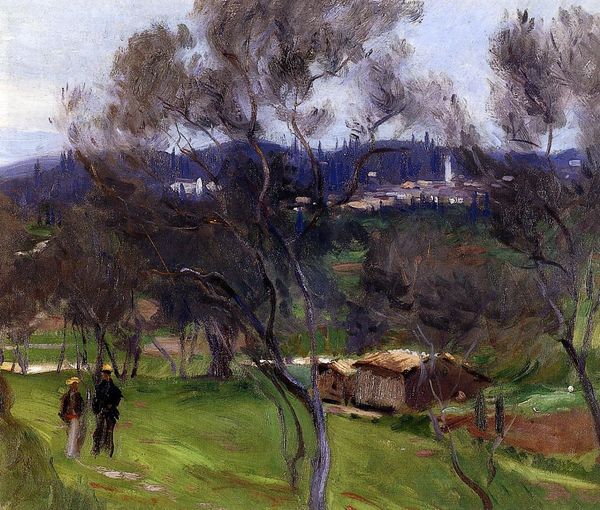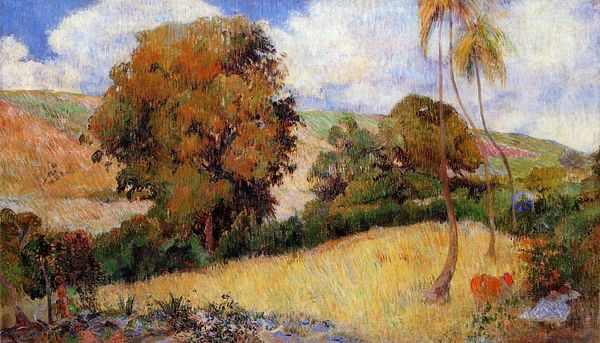
#
tree
#
abstract painting
#
impressionist painting style
#
landscape
#
waterfall
#
river
#
house
#
impressionist landscape
#
possibly oil pastel
#
oil painting
#
fluid art
#
acrylic on canvas
#
naive art
#
natural-landscape
#
water
#
painting painterly
#
nature
#
watercolor
#
arm
Copyright: Public domain
Editor: So here we have Gauguin’s "Aven running through Pont-Aven" from 1888. It’s… kind of a chaotic landscape. The colors are so intense. I’m struck by the way the houses almost blend in with the nature around them. What do you see in this piece? Curator: I see a conscious disruption of the established modes of landscape painting. It seems that Gauguin is focusing our attention less on capturing an objective reality, and more on a flattening of space that pushes the materiality of paint to the forefront. Consider the application – broad strokes, almost crude in their application. This directs our focus to the labor involved. Editor: That’s interesting, the “labor” involved. Can you say more about that? Curator: Absolutely. Think about the societal position of painting at that time, the market for "high art". And here, Gauguin uses techniques, that border on craft or decorative work. The overt brushstrokes almost flaunt the fact of their making, a rejection of academic polish. The bold colors similarly – are they true to the scene, or exaggerations designed to draw our attention to the artificiality of the image itself, to the means of its production? Editor: So, it's not just *what* he paints, but *how* he paints it that's significant. By emphasizing the materiality of the paint and his application, is he critiquing the commercialization of art? Curator: Precisely! And the viewer's consumption of art. The "scene" almost becomes secondary to the surface, the labor. By showcasing the process, he raises questions about value – not just the aesthetic, but also the social and economic forces at play. Editor: I never thought of it that way. It definitely makes me consider what I usually overlook. I guess I assumed the broad strokes were just…impressionistic. Curator: And that’s how we’ve been conditioned to see them, perhaps! But now you've opened yourself to considering its radical nature in light of production. Editor: Well, thanks! That's given me a lot to think about.
Comments
No comments
Be the first to comment and join the conversation on the ultimate creative platform.

